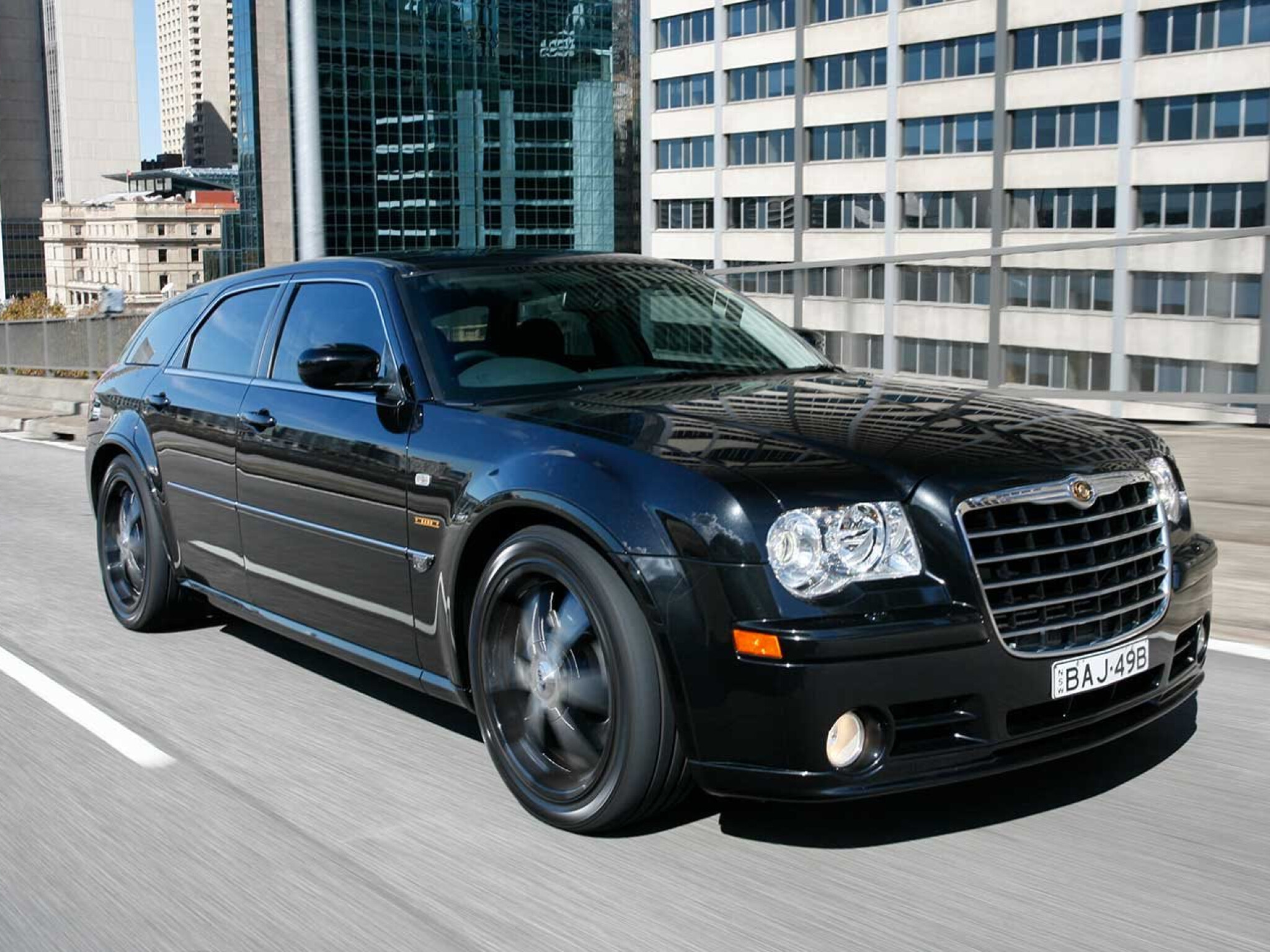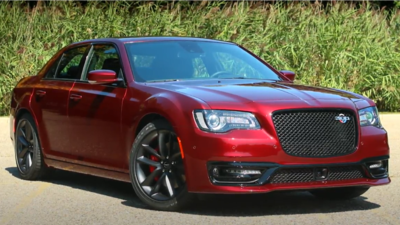Chrysler is an American automobile manufacturer that has been in operation for over 95 years. Founded in 1925 by Walter Chrysler, the company has gone through many ups and downs throughout its history. From being on the brink of bankruptcy to becoming one of the “Big Three” automakers in the United States, Chrysler’s journey has been a rollercoaster ride. In this blog post, we will take a closer look at the history of Chrysler, its current state, product lineup, financial performance, market share, competitors, strengths and weaknesses, opportunities and threats, and its future.
- NFL Week 14 Power Rankings 2023: How all 32 teams stack up
- Want To Get Rid of Your Car but Still Owe More Than It’s Worth? 5 Things You Can Do To Come Out Even
- $650 to More Than $700 Is Now Average for Monthly Car Payment
- How do car rebates work — and how do you get one?
- Crew Cab vs. Quad Cab vs. King Cab Which is Right for You?
Chrysler Today

Today, Chrysler is a subsidiary of Stellantis, a multinational automotive corporation formed in 2021 after the merger of Fiat Chrysler Automobiles (FCA) and Groupe PSA. Under the Stellantis umbrella, Chrysler operates alongside other well-known brands such as Jeep, Dodge, Ram, and Maserati. Despite being part of a larger corporation, Chrysler still maintains its own identity and continues to produce vehicles under its own name.
You are watching: The History of Chrysler
Chrysler’s headquarters are located in Auburn Hills, Michigan, and the company has manufacturing plants in the United States, Canada, Mexico, and China. In recent years, Chrysler has shifted its focus towards producing more luxury and high-performance vehicles, while also expanding into the electric vehicle market with the launch of the Chrysler Pacifica Hybrid minivan.
Chrysler’s Product Lineup
Chrysler currently offers three models in its product lineup: the Chrysler 300, the Chrysler Pacifica, and the Chrysler Voyager. The Chrysler 300 is a full-size luxury sedan that has been in production since 2004. It is known for its bold and distinctive design, powerful engine options, and upscale interior. The Chrysler Pacifica is a minivan that was first introduced in 2016. It offers a spacious and comfortable interior, advanced technology features, and a hybrid option. The Chrysler Voyager is a more budget-friendly version of the Pacifica, offering many of the same features at a lower price point.
In addition to these models, Chrysler also offers the Pacifica Hybrid, which is the only plug-in hybrid minivan on the market. This vehicle has received numerous awards for its fuel efficiency and eco-friendliness. In 2021, Chrysler announced that it will be launching an all-electric version of the Pacifica, further solidifying its commitment to the electric vehicle market.
Chrysler’s Financial Performance
Chrysler’s financial performance has been a mixed bag over the years. In the early 2000s, the company faced financial troubles and was on the brink of bankruptcy. In 2009, Chrysler filed for Chapter 11 bankruptcy and was bailed out by the U.S. government. The company then went through a restructuring process and formed a partnership with Italian automaker Fiat.
See more : 2024 Ford Bronco Sport A Comprehensive Guide for Chicago Residents
Since then, Chrysler’s financial performance has improved significantly. In 2014, the company reported its first profitable year since the bankruptcy, and in 2018, it achieved its best financial results in over a decade. However, in 2020, due to the COVID-19 pandemic, Chrysler’s sales and revenue took a hit, resulting in a net loss for the year. Despite this setback, the company remains optimistic about its future and continues to invest in new technologies and products.
Chrysler’s Market Share

Chrysler’s market share has fluctuated over the years, but it has remained one of the top-selling brands in the United States. In 2020, Chrysler had a 2.5% share of the U.S. automotive market, making it the seventh-largest automaker in the country. Its best-selling model, the Pacifica, holds a 20% share of the minivan market, making it the second-best-selling minivan in the U.S.
In terms of global market share, Chrysler’s numbers are much lower. In 2020, the company had a 0.5% share of the global automotive market, ranking it at number 14 among all automakers. This is due to the fact that Chrysler primarily focuses on the North American market and has a limited presence in other regions.
Chrysler’s Competitors
Chrysler’s main competitors in the U.S. market are Ford and General Motors (GM), which make up the “Big Three” automakers along with Chrysler. These companies have a long history of competing against each other and often release similar models in the same segments. Other major competitors for Chrysler include foreign brands such as Toyota, Honda, and Hyundai, which have a strong presence in the U.S. market.
In the luxury segment, Chrysler competes with brands like Mercedes-Benz, BMW, and Audi. However, Chrysler’s luxury offerings are not as extensive as these brands, and it mainly competes in the full-size sedan and minivan segments.
Chrysler’s Strengths and Weaknesses

Like any company, Chrysler has its own set of strengths and weaknesses. Some of its key strengths include:
- Strong brand recognition: Chrysler has been in operation for over 95 years and has established itself as one of the top American automakers.
- Diversified product lineup: With a mix of luxury and budget-friendly vehicles, Chrysler caters to a wide range of customers.
- Innovation and technology: Chrysler has been investing in new technologies and products, such as electric and hybrid vehicles, to stay competitive in the market.
See more : Used car market in ‘uncharted territory’ as high prices remain sticky, Edmunds says
On the other hand, some of Chrysler’s weaknesses include:
- Limited global presence: As mentioned earlier, Chrysler primarily focuses on the North American market and has a limited presence in other regions.
- Dependence on a few models: The majority of Chrysler’s sales come from a few models, such as the Pacifica and 300, which makes the company vulnerable to market changes.
- Reliability issues: In recent years, Chrysler has faced criticism for the reliability of its vehicles, which can affect its reputation and sales.
Chrysler’s Opportunities and Threats
Chrysler operates in a highly competitive and constantly evolving industry, which presents both opportunities and threats. Some of the opportunities for Chrysler include:
- Growing demand for electric and hybrid vehicles: With the increasing focus on sustainability and eco-friendliness, there is a growing demand for electric and hybrid vehicles, which Chrysler is well-positioned to capitalize on.
- Expansion into new markets: As part of Stellantis, Chrysler has the opportunity to expand its presence into new markets and reach a wider customer base.
- Partnerships and collaborations: Chrysler can explore partnerships and collaborations with other companies to develop new technologies and products, reducing its research and development costs.
However, there are also several threats that Chrysler needs to be aware of, including:
- Intense competition: The automotive industry is highly competitive, and Chrysler faces tough competition from both domestic and foreign brands.
- Economic downturns: Economic downturns, such as the one caused by the COVID-19 pandemic, can significantly impact the automotive industry and affect consumer demand for vehicles.
- Changing consumer preferences: Consumer preferences and trends are constantly changing, and if Chrysler fails to keep up with these changes, it could lose market share to its competitors.
Chrysler’s Future
The future of Chrysler looks promising, as the company continues to invest in new technologies and products. With the launch of the all-electric Pacifica and plans to introduce more electric and hybrid models in the coming years, Chrysler is positioning itself as a leader in the electric vehicle market. The company is also exploring new partnerships and collaborations, such as its recent joint venture with Waymo to develop self-driving vehicles.
However, Chrysler still faces challenges, such as improving its reliability and expanding its global presence. With the backing of Stellantis and access to its resources, Chrysler has the potential to overcome these challenges and continue to grow and thrive in the automotive industry.
Conclusion
In conclusion, Chrysler has come a long way since its inception in 1925. From facing financial troubles and bankruptcy to becoming one of the top American automakers, the company has shown resilience and determination throughout its history. Today, Chrysler continues to evolve and adapt to the changing market, with a focus on innovation and sustainability. With its strong brand recognition, diversified product lineup, and opportunities for growth, Chrysler is well-positioned to succeed in the future. However, it also faces threats and challenges that it must address to maintain its position in the highly competitive automotive industry. Only time will tell what lies ahead for Chrysler, but one thing is for sure – it will continue to be a major player in the world of automobiles.
Source: https://us.congthucvatly.com
Category: Car

